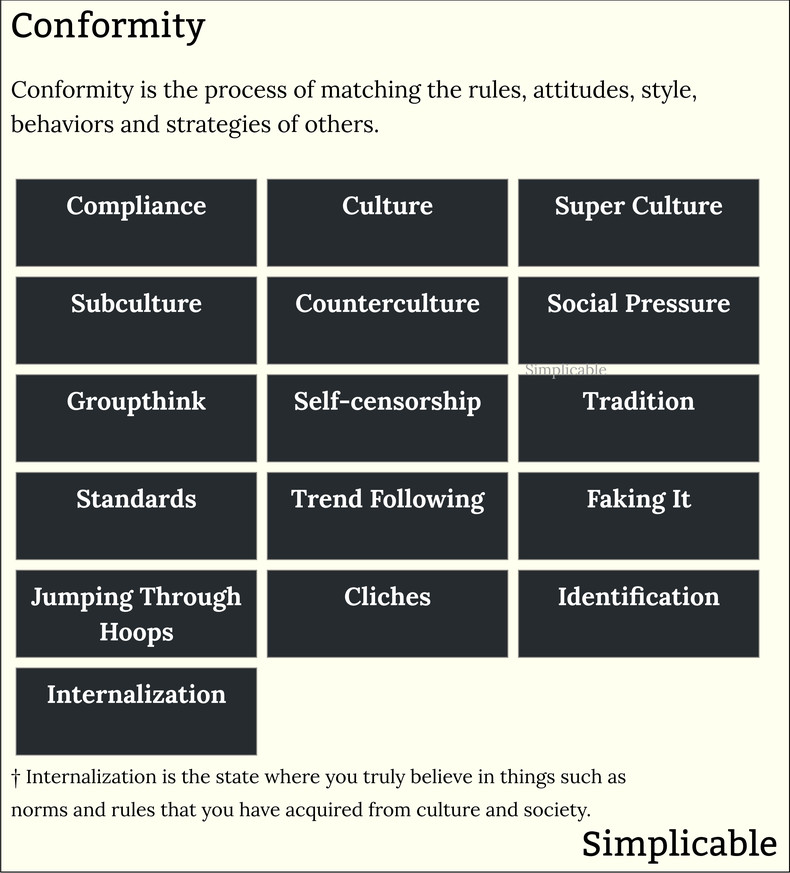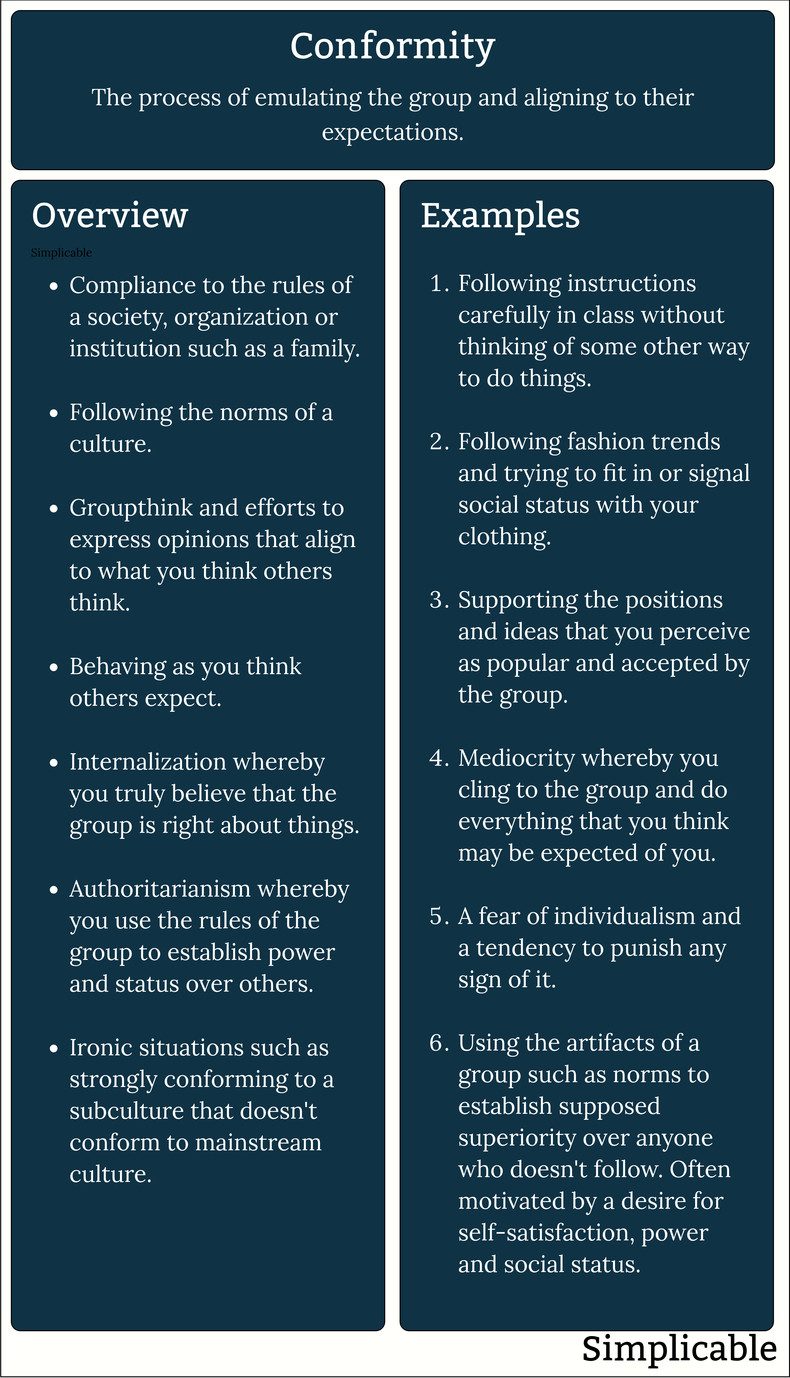
Compliance
Compliance to laws, regulations and rules in situations where you face a penalty if you don't abide.Culture
Following the norms and expectations of a culture in order to get along with those around you. This may result in clashes between the individual view of the world and the collective.Super Culture
Super culture is a culture that exists on a global basis that transcends national borders such as sports and art. As with culture, super cultures can have norms that demand conformance to really fit in.Subculture
A subculture is a small culture that may be a part of a culture or super culture. For example, the culture of a neighborhood or the culture attached to a particular hobby.Counterculture
Counterculture is a culture that views itself as an alternative to a dominant mainstream culture. For example, a music culture that prides itself on breaking the rules of music or society in general. A culture that embraces strident individualism may still have strong norms with high levels of conformity amongst members. For example, a group that thinks it isn't cool to follow mainstream culture whereby everyone conforms to the norm of disregarding the mainstream norm.Social Pressure
Social groups such as a community or team commonly push individuals to conform to prevailing norms with social punishments and rewards. For example, an individual may be sidelined where they fail to comply to a norm that a group value.Groupthink
Groupthink is where a community strictly follows an ideology with self appointed gatekeepers who call out anyone who doesn't conform.Self-censorship
Self-censorship is where you don't feel free to communicate what you think because it violates a norm or rule. The gatekeepers of an ideology seek to silence opposition by pushing them into this state.Tradition
Tradition is the practice of doing things the way that they have been done in the past. Tradition provides a connection between generations and allows for the preservation of what has worked in the past. However, there may be negative implications of conforming to a particular tradition such as repeating the mistakes of the past or failing to redefine things with the ideas of a new generation.Standards
Standards and informal standards known as best practices may be followed by firms and professionals in order to avoid reinventing processes and practices that are well established. This can make sense or it can be an excuse not to think.Trend Following
Conforming to things that seem new and popular in an attempt to achieve a goal such as looking stylish. It is also common for governments and organizations to follow trends where they lack an ability to lead change.Faking It
Copying something that is supposed to be original such as an artist who emulates another artist's style. In some cases, this copy is imperfect resulting in an accidental original style.Jumping Through Hoops
Saying what people want to hear to obtain some reward. For example, replying to interview questions with what you think the interviewer wants to hear.Cliches
Repeating things that you have heard in place of original ideas. These are likely to be cliches that other people have also heard such that you offer little value. For example, a manager who suggests it is time to "think outside of the box."Identification
Emulating those who you admire. For example, an individual who begins to act like a manager they look up to. This can be described as a process of moving your identity closer to others by conforming to behaviors you have observed. This is a type of learning that has benefits, particularly if an individual is eventually able to move beyond emulating to lead new ways forward.Internalization
Conforming to things that you truly believe are correct. In some cases, an individual may internalize norms after a period of questioning. This can be a process whereby questioning subsides because the norm is making life easier.Summary
The following are common types of conformity:
Overview
Conformity is the process of emulating the group and aligning to their expectations.
| Definitions: Conformity | ||
Type | ||
Definition (1) | The process of matching the rules, attitudes, style, behaviors and strategies of others. | |
Definition (2) | The process of emulating the group and aligning to their expectations. | |
Related Concepts | ||







































